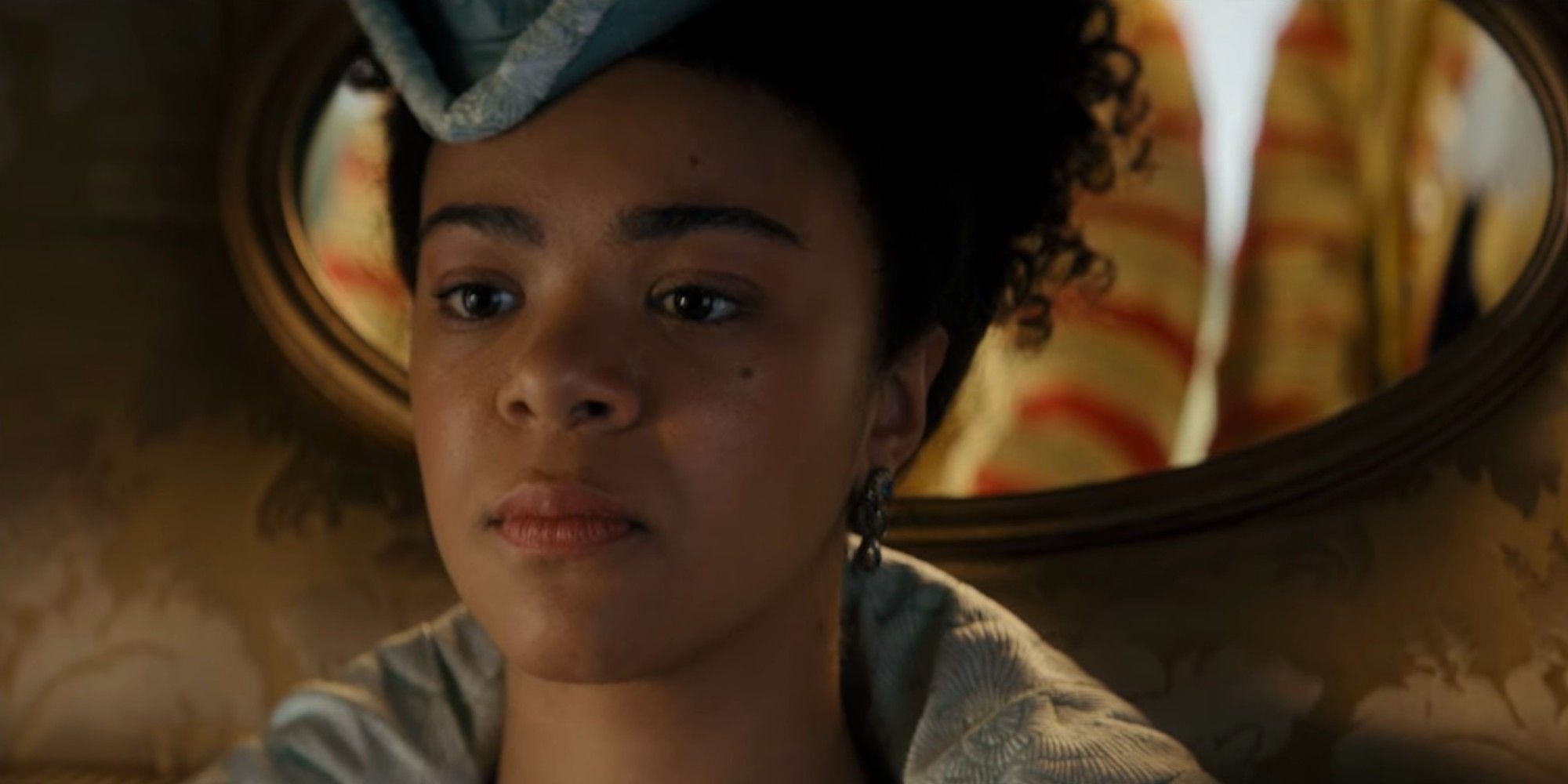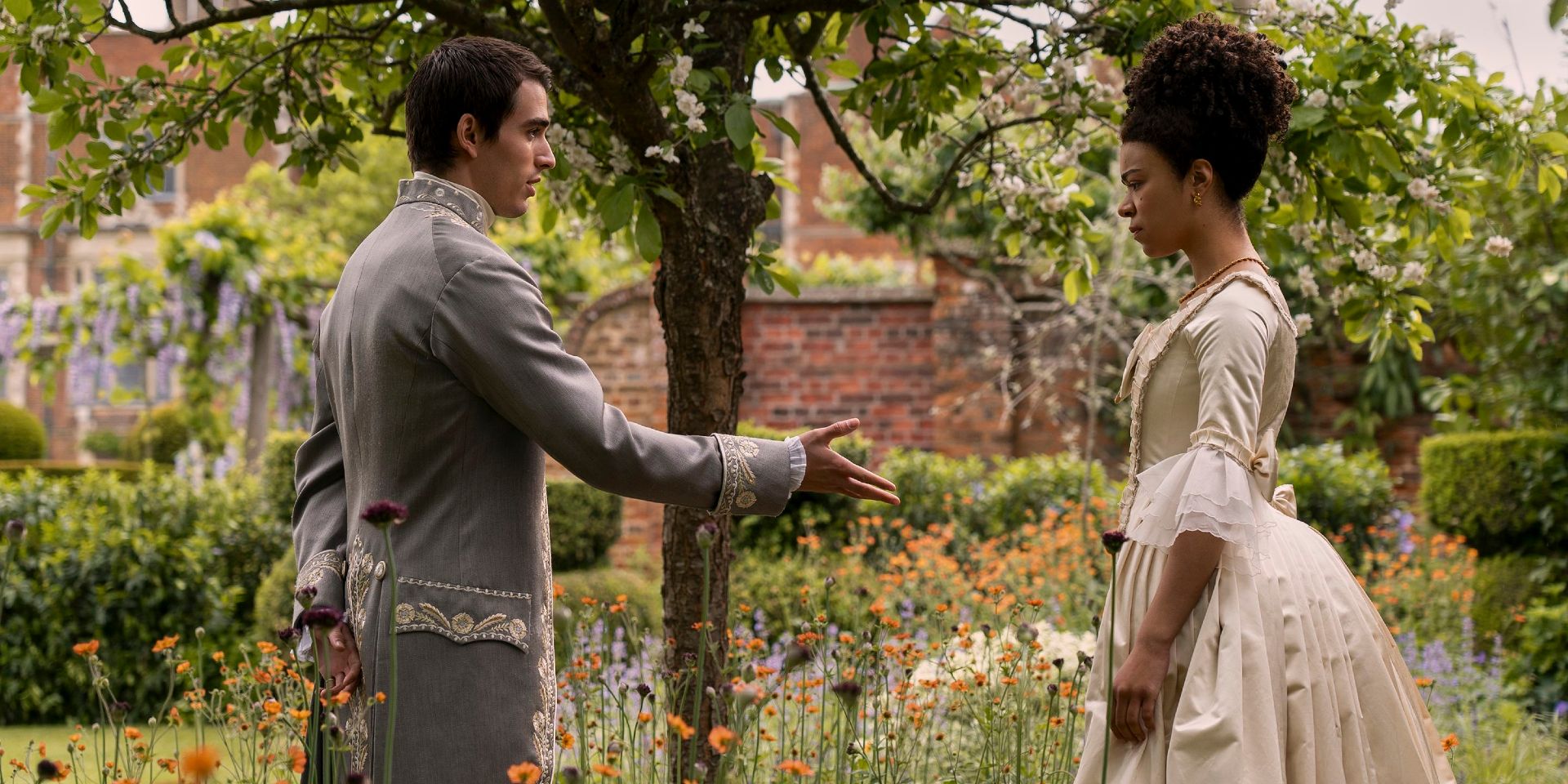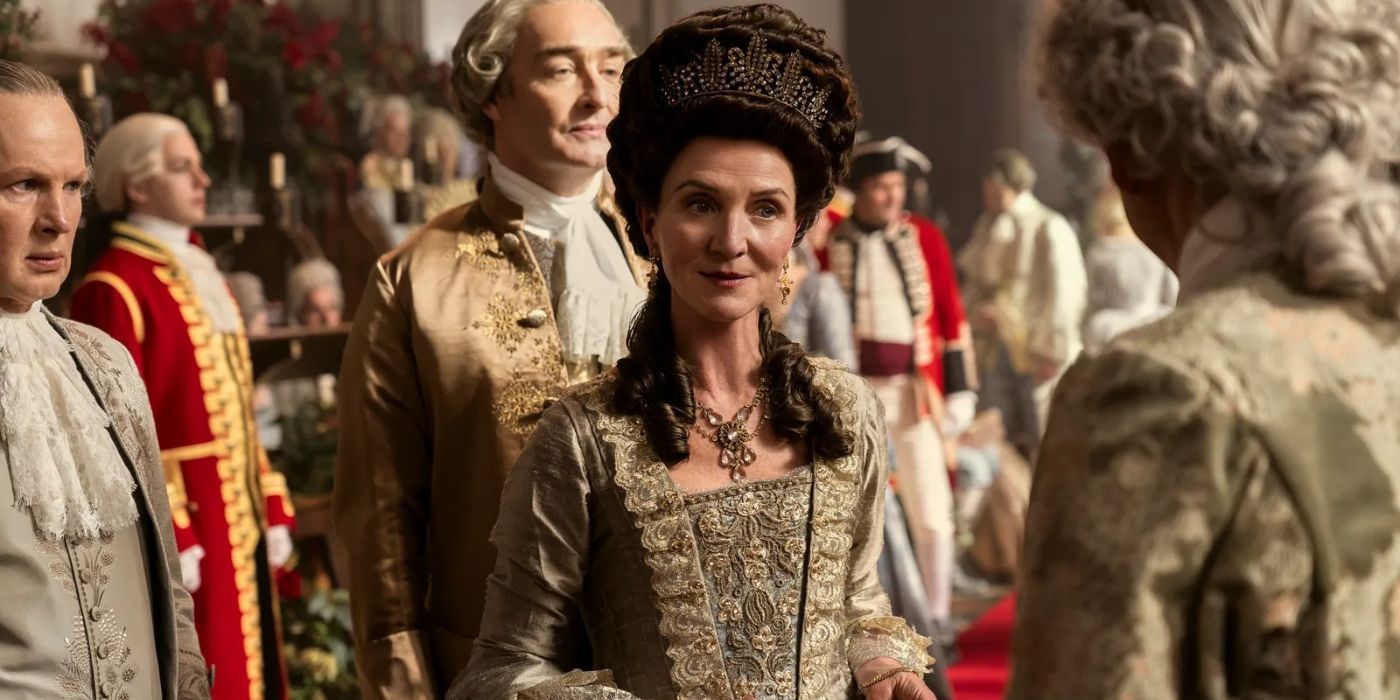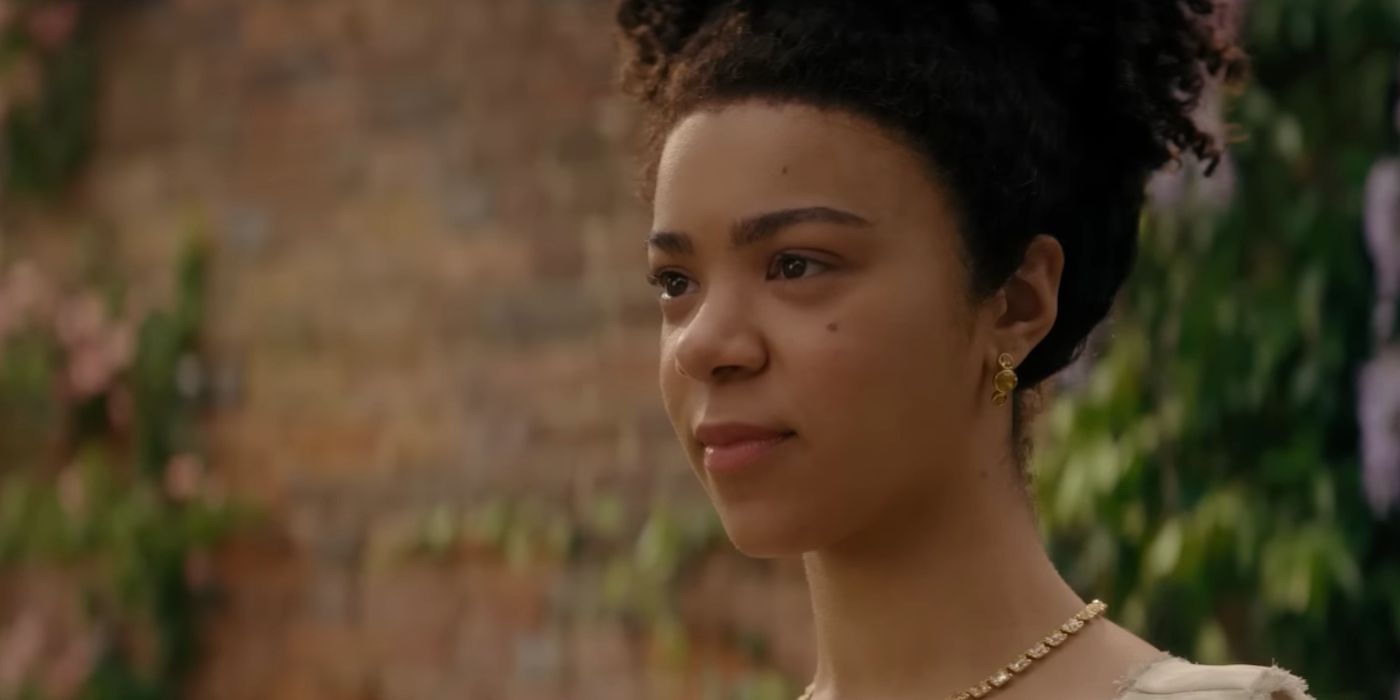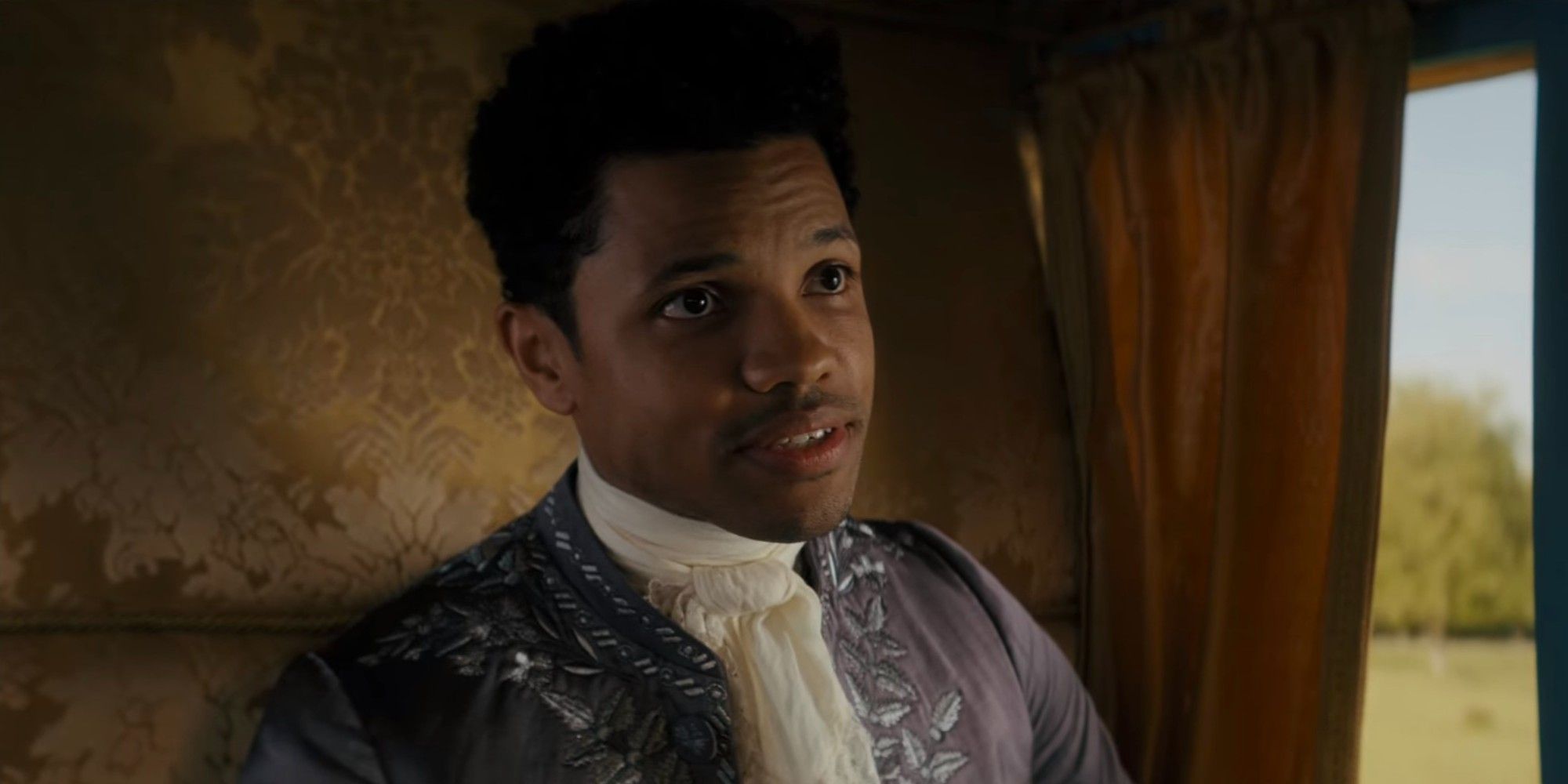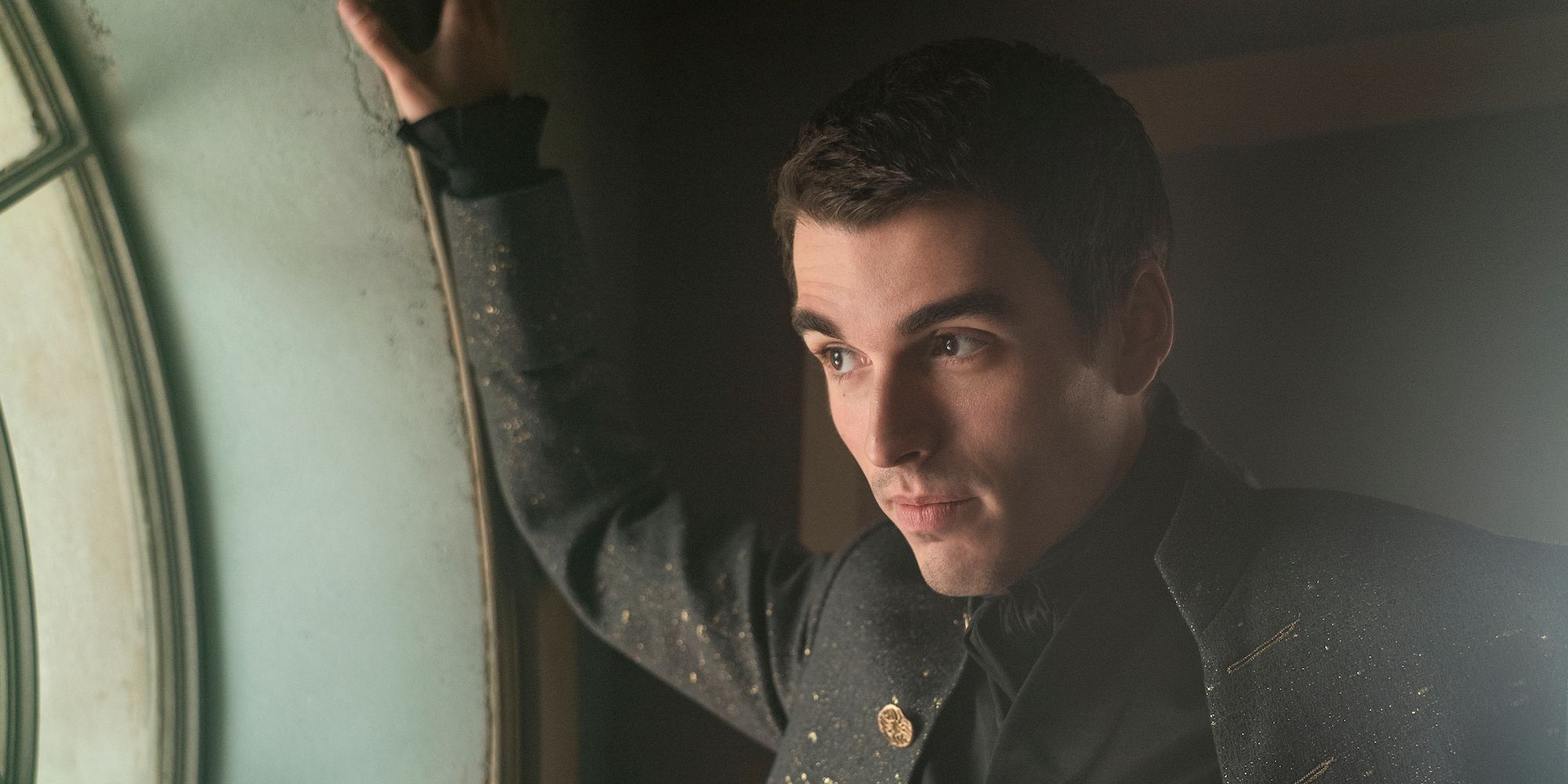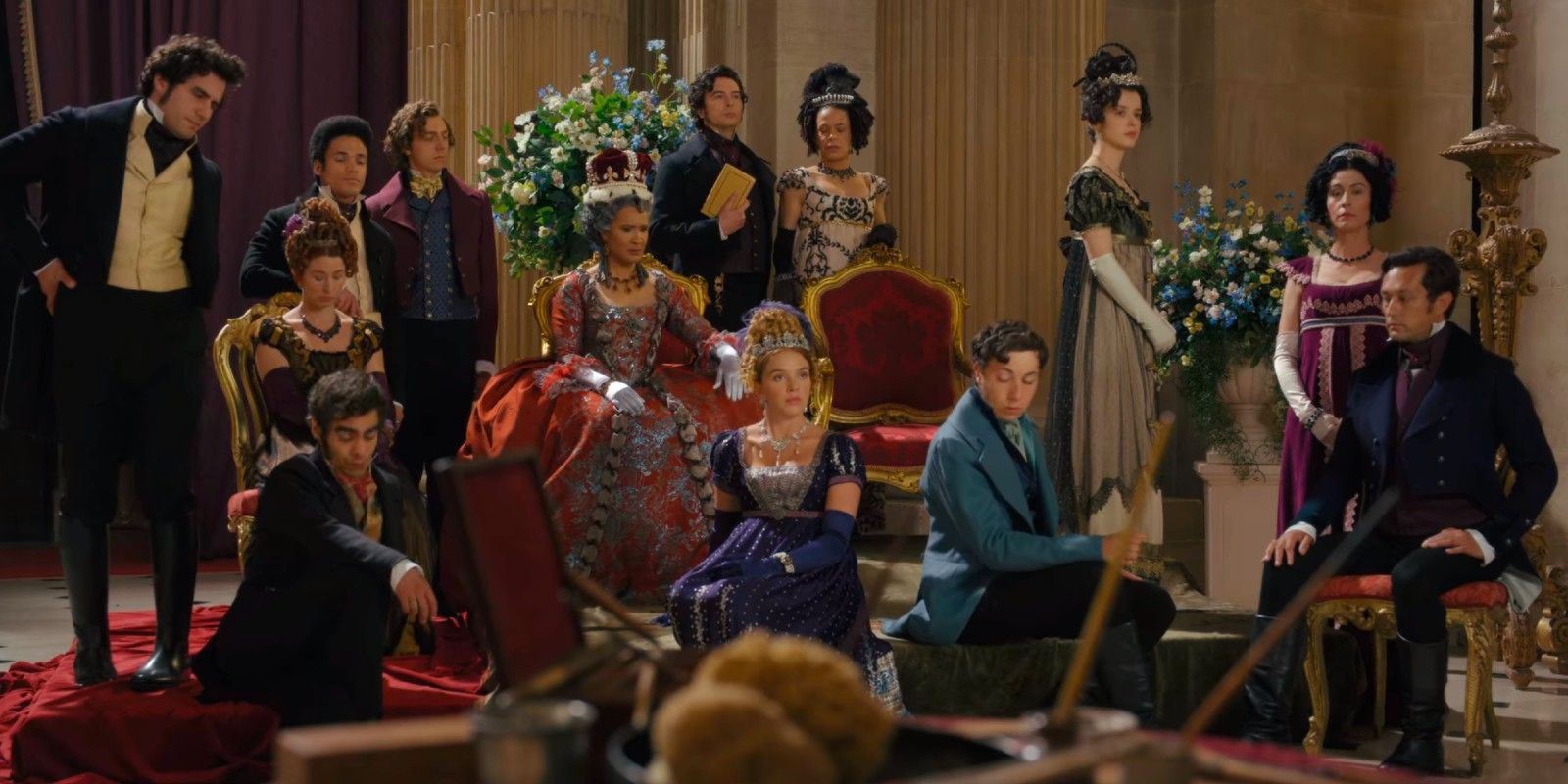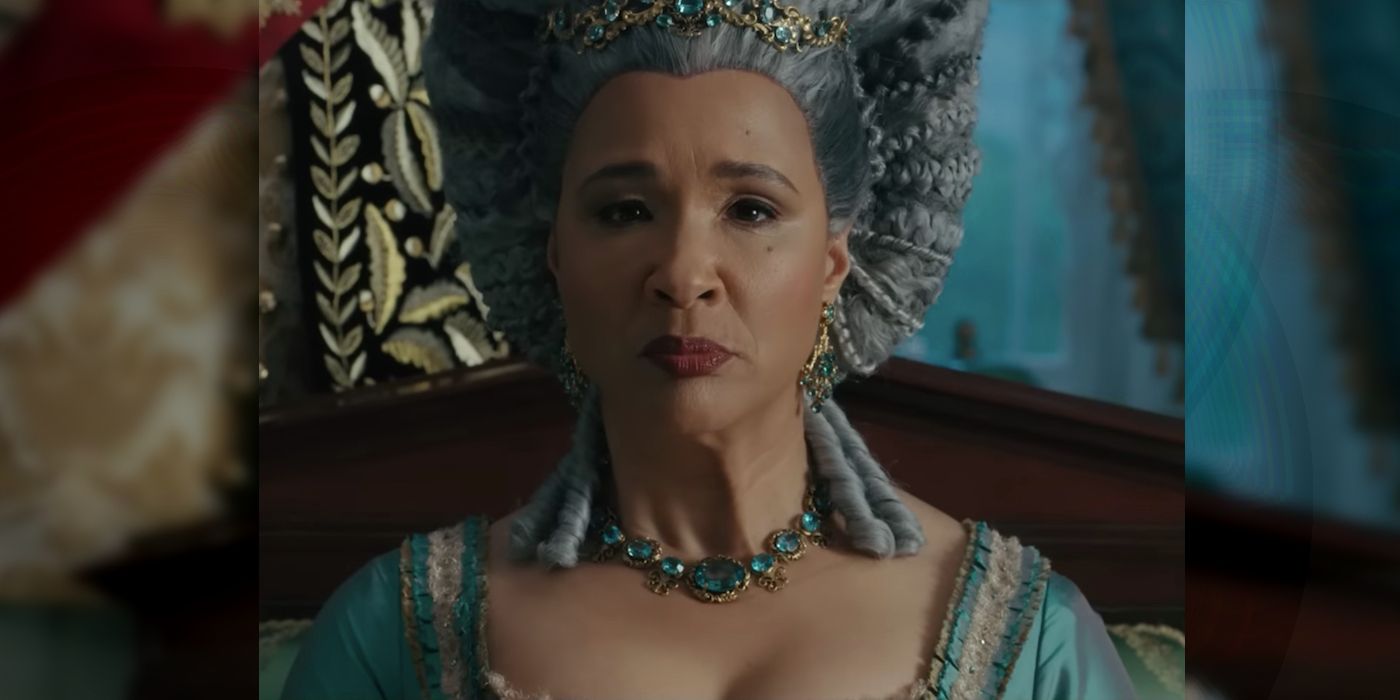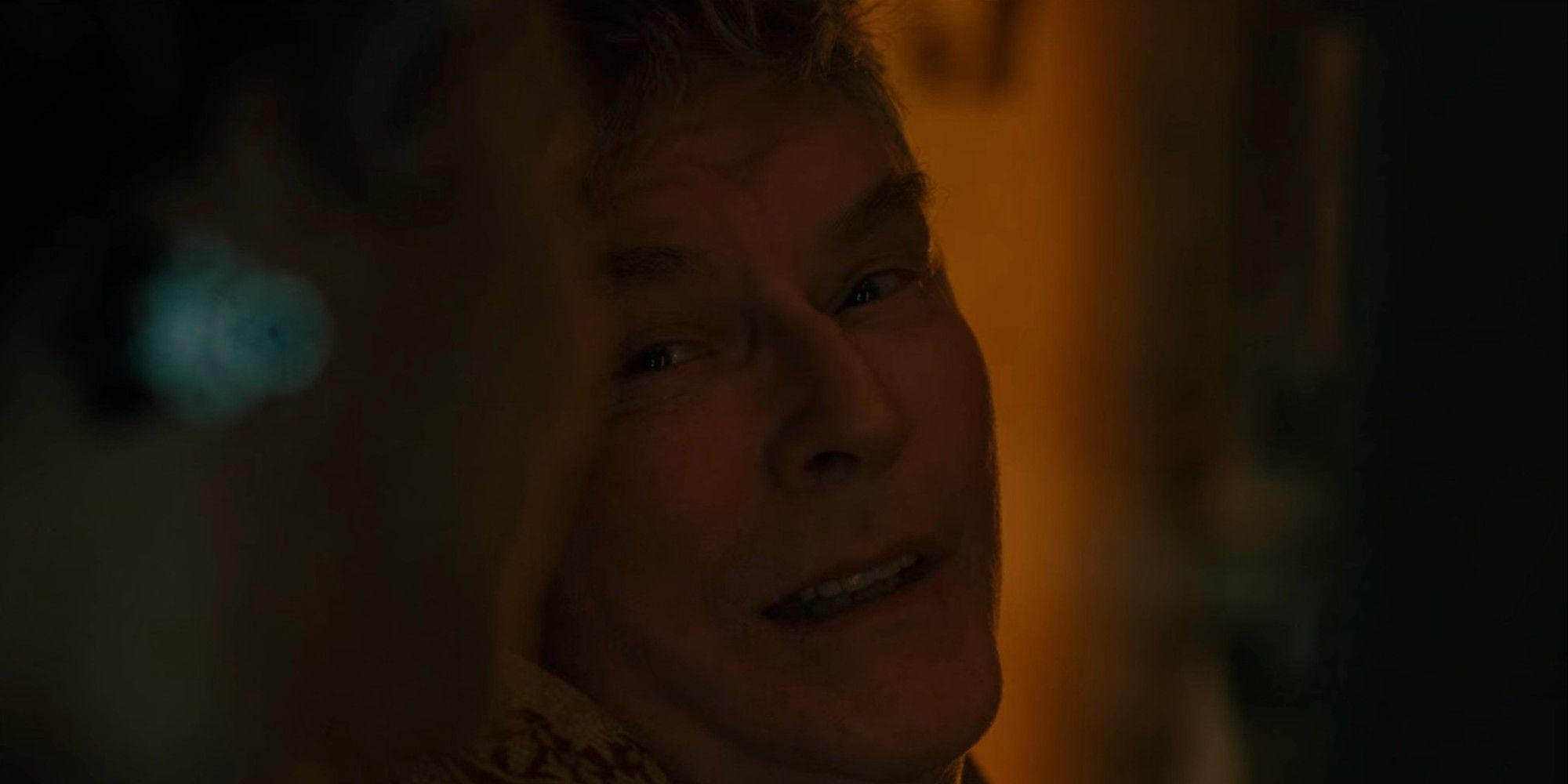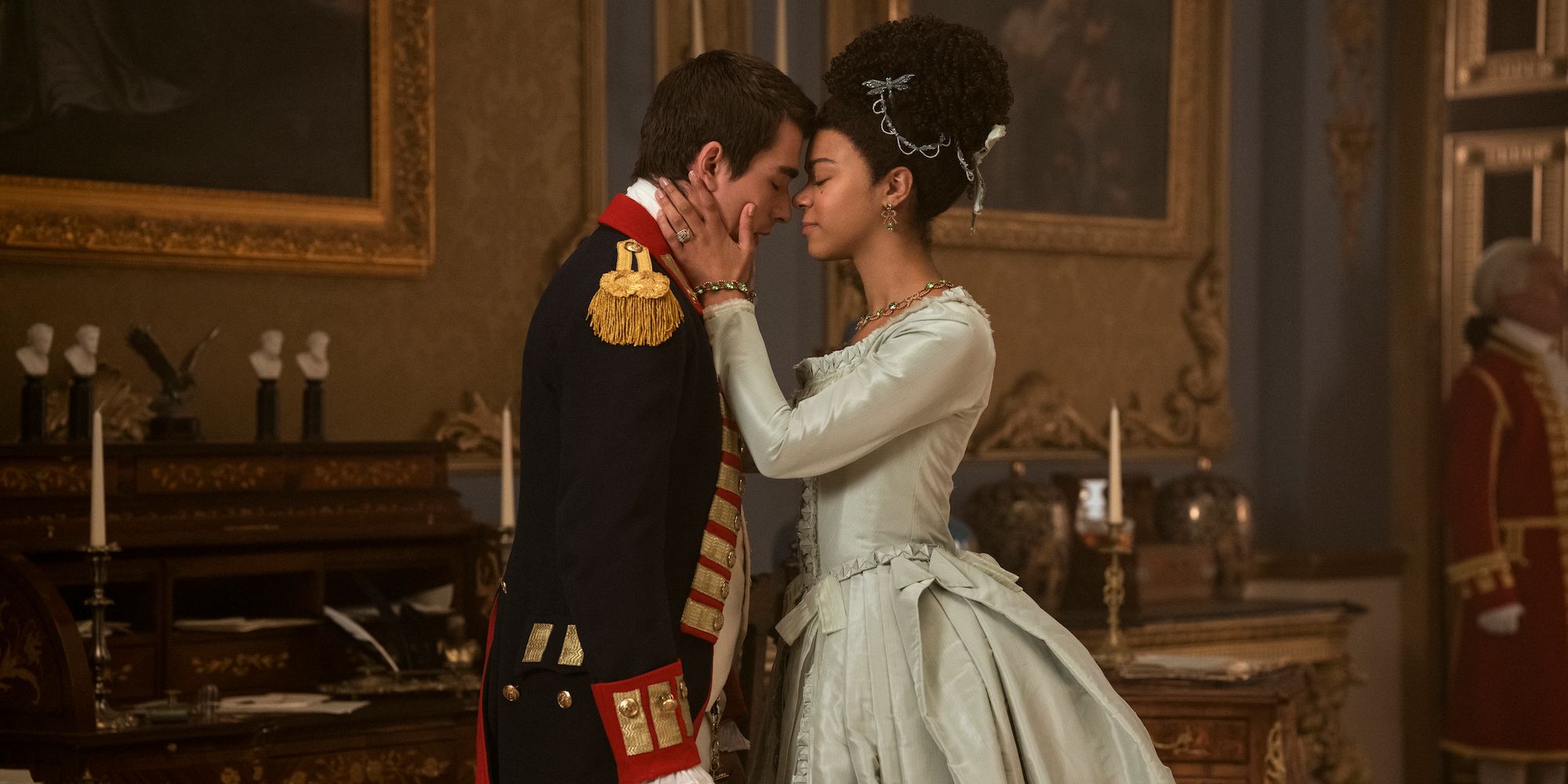
The Bridgerton spinoff Queen Charlotte manages to get many details about the titular queen’s real-life correct, but the Netflix series still changes several aspects of the true story. Queen Charlotte is a unique entry for Bridgerton because while Bridgerton is based on Julia Quinn’s romance novels, its spinoff takes its inspiration from real historical figures, with a spotlight on the titular character, Queen Charlotte. Part prequel depicting the love story of Queen Charlotte and King George III and part continuation of Bridgerton between seasons 2 and 3, the spinoff offers a unique perspective for the franchise. However, despite being based in reality, Queen Charlotte still changes the true story.
For the most part, Queen Charlotte adheres to the broad arc of the queen’s life, providing an accessible and entertaining look at history. However, the Netflix series had to make some big changes to the real story so it would still fit the arc of Bridgerton, leading some facts to get lost to history. Here are the 10 biggest changes to Queen Charlotte’s real life in Queen Charlotte: A Bridgerton Story, including what really happened.
10Queen Charlotte Came To England Almost 20 Years Earlier
Netflix’s Bridgerton is known for its Regency-era setting, but to make Queen Charlotte’s timeline match, the Bridgerton spinoff changes when Queen Charlotte arrives in England. Many of the details surrounding Queen Charlotte’s swift marriage to King George III are correct in the Netflix show. However, the year of their union and Charlotte’s arrival in England from Mecklenburg-Strelitz is drastically different in real life.
Given how long before Bridgerton’s spinoff is set and the fact that Violet Bridgerton appears in Queen Charlotte as an adolescent, Queen Charlotte’s events must take place in 1780. However, in reality, Queen Charlotte arrived in England and married King George in 1761, nearly two decades prior to when the show is meant to take place. While this change from Queen Charlotte’s true story is understandable to make the show’s plot line up better with Bridgerton and extend Charlotte’s lifespan, it is a major difference from the actual events that occurred in Queen Charlotte’s life.
9Queen Charlotte Didn’t Speak English When She First Came To England
In Queen Charlotte, the titular character and her future husband King George appear to hit it off soon after their initial meeting, but in real life, the two would have had to contend with a language barrier. Though the Bridgerton spinoff doesn’t go into depth with Queen Charlotte’s origins, she hails from a small duchy in northern Germany called Mecklenburg-Strelitz and has a meager education. As a result, Queen Charlotte couldn’t speak English when she arrived in England to marry King George (though she quickly picked up the language), which means their first meeting would have been way different than Netflix’s Queen Charlotte depicts.
Of all of Queen Charlotte‘s changes to real life, altering the fact that Queen Charlotte didn’t speak English at first is one of the most understandable. Given the limited episode count and the vast story the Bridgerton spinoff depicts, having Queen Charlotte speak English from the start streamlines the show’s plot to focus on bigger stories. That being said, showing Queen Charlotte as having always spoken English is a huge difference from what her early days in England would have really been like in real life.
8The Great Experiment Is Entirely Fictional
Bridgerton depicts an alternate universe in which England’s upper class is far more diverse, and Queen Charlotte shows the origin of this society through a fictional “Great Experiment.” In Queen Charlotte, The Great Experiment is intended to unite all races to create a better, stronger England, leading several minoritized families (such as Lord and Lady Danbury) to receive peerages, thus elevating their societal status. Additionally, the union of the biracial Queen Charlotte and white King George is stated to have led to wider acceptance in the Bridgerton universe. Despite being a huge component of Queen Charlotte, the Great Experiment never existed in real life.
In reality, England’s society during this time period is far less accepting than Bridgerton and Queen Charlotte depict. Sadly, England was still deeply entrenched in bigotry and racism throughout King George’s rule, and the monarch only abolished slavery in 1807, just a few years before the events of Bridgerton season 1. So, while the idea of the Great Experiment creates an interesting alternate universe in Bridgerton and Queen Charlotte, its existence is entirely fictional.
7Queen Charlotte’s Race Is Different In Real Life
In both Bridgerton and Queen Charlotte, the titular queen is depicted as being biracial, but the queen of England’s race was possibly different in real life. Despite Queen Charlotte’s portrayal, scholars remain divided on whether Queen Charlotte might have been Black to this day. Regardless of the truth behind the discourse surrounding Queen Charlotte’s race, the queen of England did not appear to have identified as having any Black ancestry, which differs from her Bridgerton and Queen Charlotte counterparts.
6Charlotte’s Brother Did Get His Lady
At the end of Queen Charlotte, the titular character’s brother proposes to and is rejected by Lady Danbury, but in real life, his track record with women was a little different. Queen Charlotte only depicts the Bridgerton character’s brother Adolphus, but Adolphus’ romantic pursuits are more akin to those of the real Queen Charlotte’s other brother, Ernest, who did get his girl (sort of). Ernest was interested in marrying a princess, but rather than the princess rejecting his proposal, it was actually Queen Charlotte who advised against the union, which differs greatly from the events depicted in Queen Charlotte.
5King George’s Mental Illness Followed A Different Timeline In Real Life
A huge plot point in Queen Charlotte surrounds King George III’s mental health issues. While the real King George suffered from similar episodes as his character does on the show, his illness followed a slightly different timeline. Bridgerton and Queen Charlotte’s depiction of King George’s sad decline in health towards the end of his life is relatively accurate to real life. However, the Bridgerton spinoff seems to imply that King George’s issues were a lifelong struggle, which is not entirely true.
In Queen Charlotte, King George has a desire to remain separate from his new wife because of concerns regarding his mental health struggles (the source of which are still unknown to this day). However, it appears that the manic episodes like the ones he suffered from in Queen Charlotte might have first begun in 1765, four years after he and Queen Charlotte married. This change might make George and Charlotte’s romance more compelling, but it’s a huge difference. Though this aspect of King George’s portrayal in Queen Charlotte differs from real life, his deterioration later in life, as depicted in Bridgerton and its spinoff, is sadly true.
4Some Of Queen Charlotte’s Children Were Actually Good
The Bridgerton spinoff Queen Charlotte depicts Charlotte and George’s 13 surviving children as being rather petulant and difficult adults, but in real life, this isn’t entirely the case. Though some aspects of Queen Charlotte’s portrayal of her and King George’s children are accurate, like their tendency towards siring illegitimate children, not all of them were as bad as they are shown in the Bridgerton spinoff. Rather, several of their children were dutiful to their parents as children of the British monarch.
Both Queen Charlotte and King George had much affection for their daughters, with Princess Mary still living in Buckingham House during Bridgerton’s timeline and Princess Sophia being a companion to Queen Charlotte. Their sons stepped up to their royal duties as well, with their sons Prince George stepping in as prince regent prior to becoming King George IV, Prince Adolphus enlisting in the military, and Prince Edward siring the future Queen Victoria. While some aspects of King George and Queen Charlotte’s children are accurately portrayed in Queen Charlotte, the royal children weren’t quite as bad as they are portrayed on the show.
3Queen Charlotte Was More Affectionate To Her Family
In both Queen Charlotte and Bridgerton, Queen Charlotte’s personality is incredibly pragmatic and can sometimes border on cold, but she had a softer attitude toward her family in real life. The Bridgerton spinoff depicts Queen Charlotte’s reaction to her granddaughter’s death as being one purely of concern for the future of the Crown, but in reality, both she and King George were personally saddened by the tragic event. While Queen Charlotte was certainly committed to her duty as a monarch to ensure the sanctity and future of the Crown, she was not nearly as heartless or apathetic as the Bridgerton universe sometimes makes her appear.
2King George Was Cared For By At Least 1 Doting Daughter
Both Bridgerton and its spinoff Queen Charlotte depict King George as living in isolation towards the end of his life, but in reality, he was still cared for by some of his family. Princess Mary, who was the 11th child of Queen Charlotte and King George, remained living in the palace through adulthood, and she personally looked after both her sister, Princess Amelia, and her father during their times of illness. This differs greatly from King George’s life at the end of Queen Charlotte, which seems to show him as being isolated in Kew. While Princess Mary isn’t featured in Queen Charlotte, she doted on her ill father in real life.
1King George Hallucinated Visions of His Dead Children
Two of King George and Queen Charlotte’s 15 children didn’t survive to adulthood, and their deaths greatly affected King George’s mental deterioration towards the end of his life. In the Queen Charlotte show, the focus of King George’s manic episodes seems to center around the planets and Venus particularly, though, in real life, the monarch sometimes hallucinated visions of his dead children, Prince Octavius and Prince Alfred. Given much of Queen Charlotte centers around the early years of King George and Queen Charlotte’s love story, it’s possible King George’s illness, and their children could get a bigger focus in a potential Queen Charlotte season 2.
